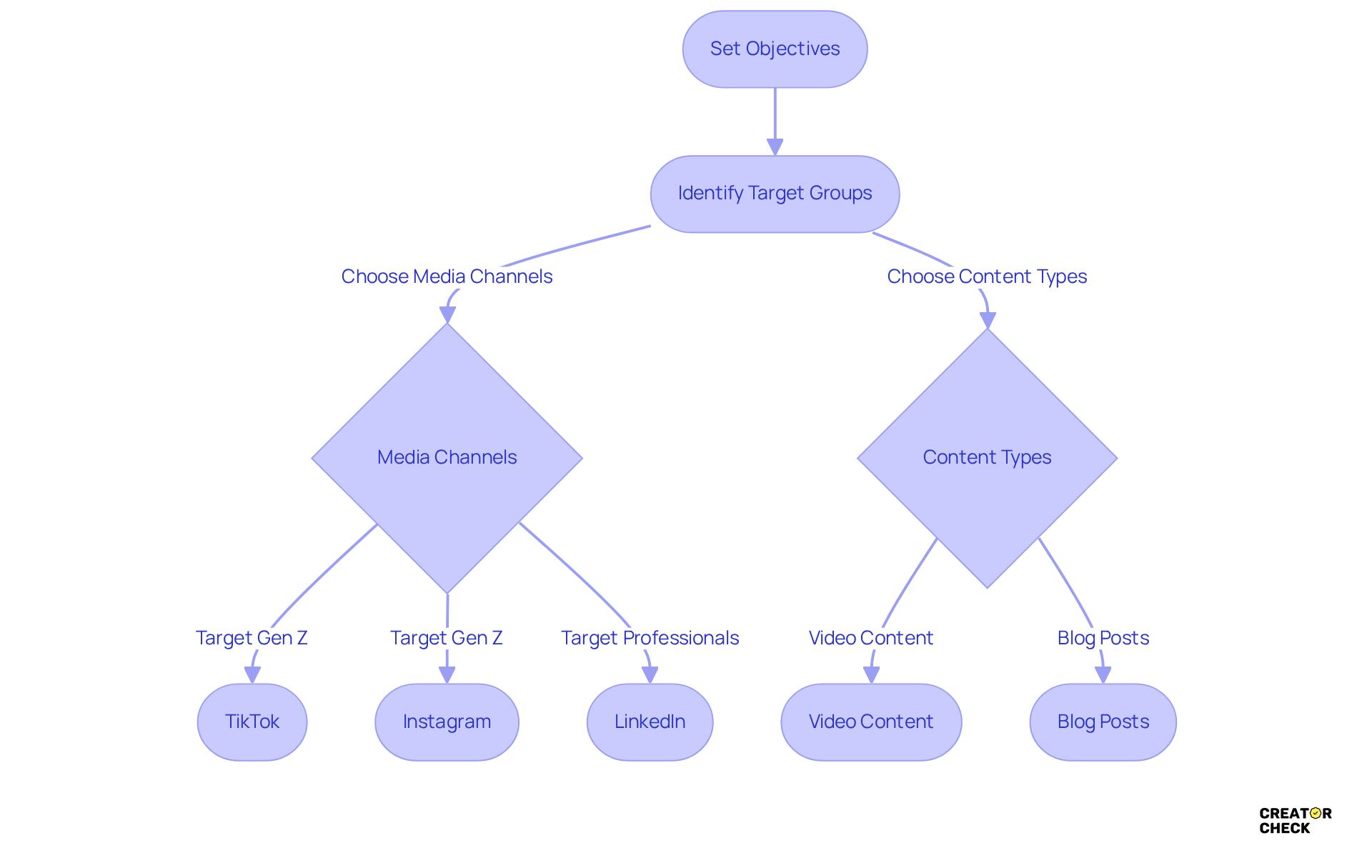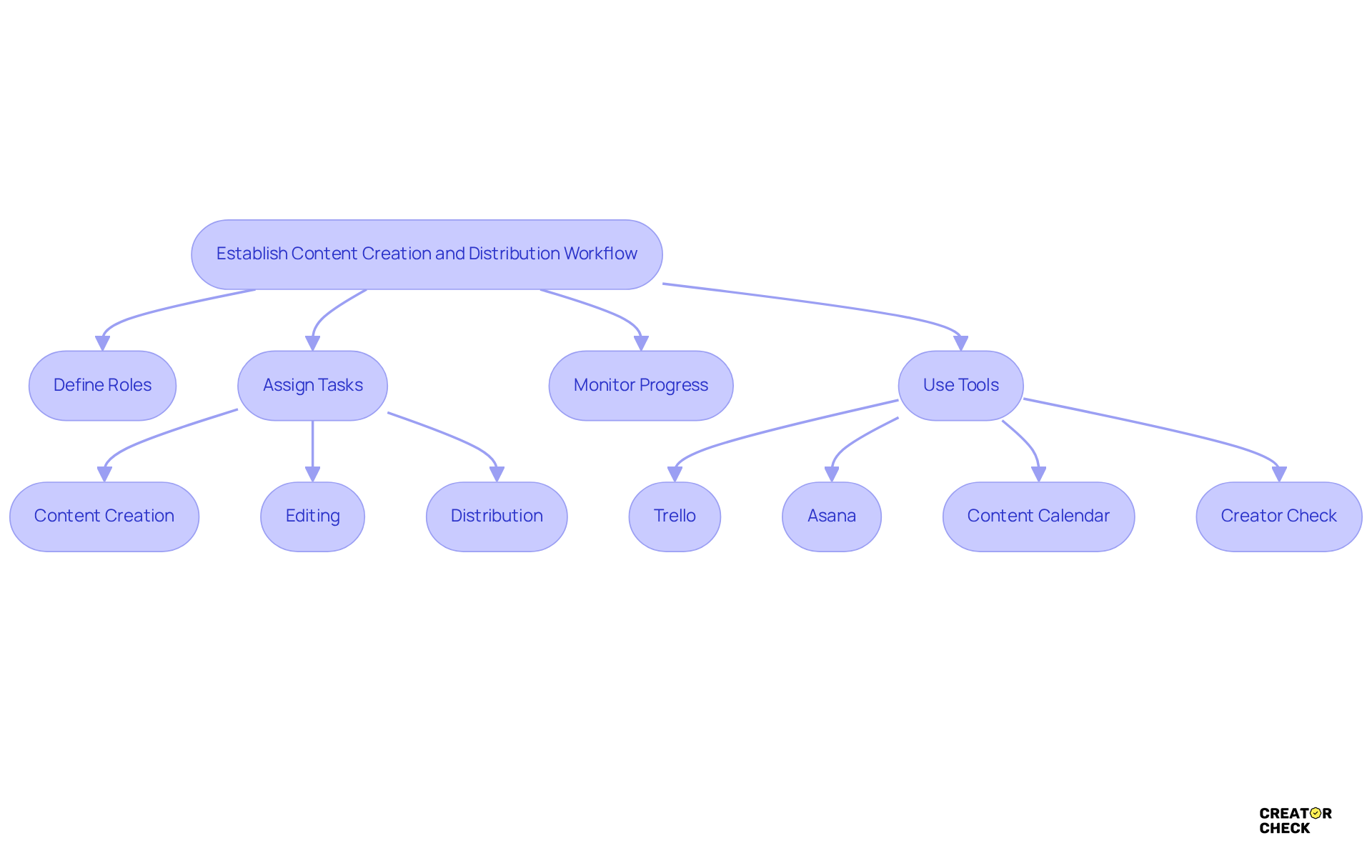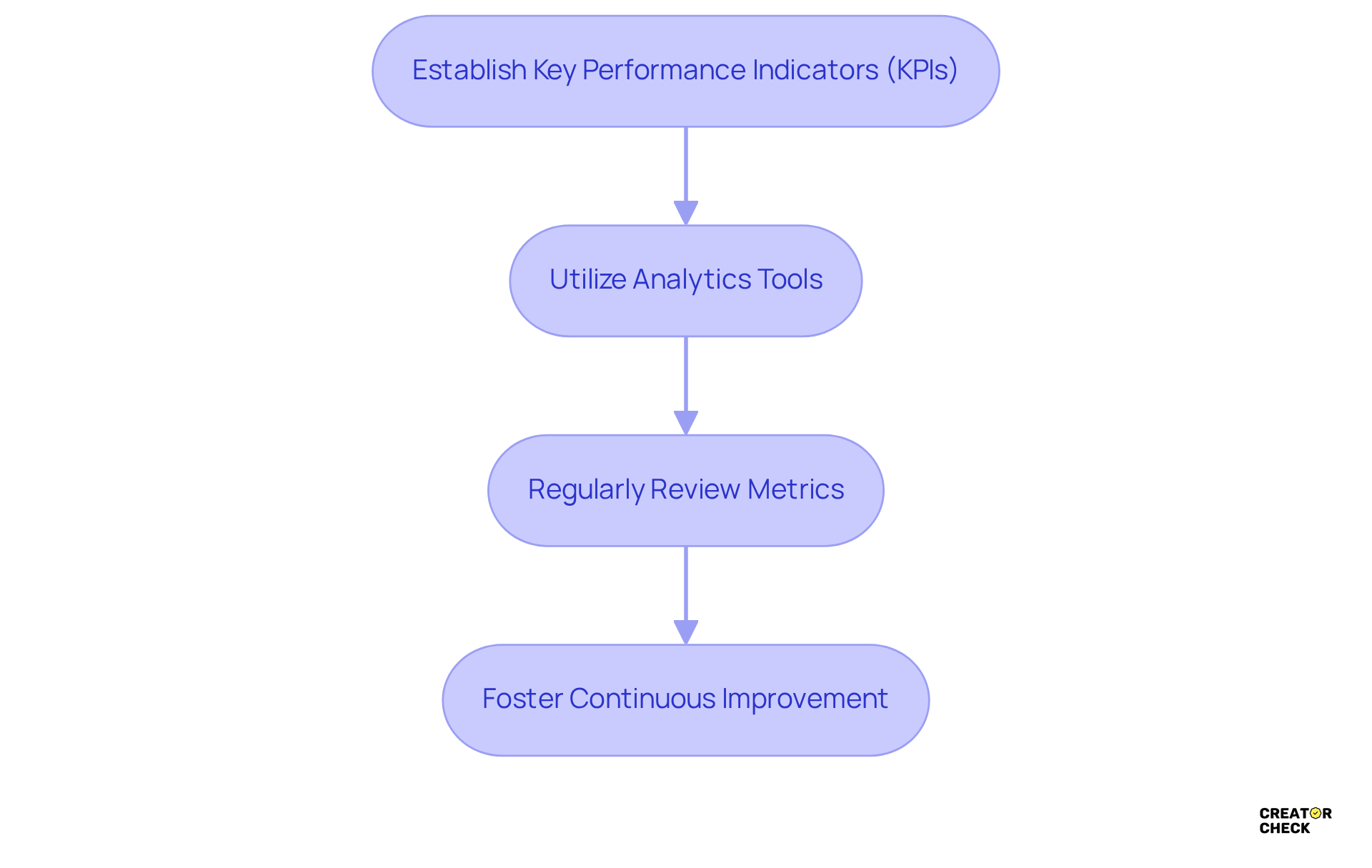Overview
This article breaks down a simple four-step process for effective brand media planning.
- First up, you’ll want to define clear objectives and target audiences.
- Next, it’s all about selecting the best media channels and formats that suit your goals.
- Then, establish a smooth content creation and distribution workflow.
- Finally, don’t forget to implement measurement and analytics for continuous improvement.
Each of these steps comes with practical strategies and tools—think using data analytics for audience segmentation or leveraging project management tools to boost workflow efficiency. This approach ultimately leads to more impactful marketing initiatives.
So, what does this mean for you? It’s all about making your marketing efforts not just effective but also engaging and fun!
Introduction
In a world where effective communication can truly make or break a brand, mastering the art of media planning is more important than ever. This article takes you on a journey through a structured approach that helps organizations boost their brand presence with smart media initiatives.
We'll explore key steps like:
- Defining clear objectives
- Identifying target audiences
- Selecting the best channels
By the end, you'll see how to enhance engagement and drive conversions. But here’s the big question: how can brands keep adapting their strategies in this ever-changing digital landscape to ensure they stay successful?
Define Clear Objectives and Target Audience
To kick off a successful brand media planning guide, organizations need to set some clear objectives first. These objectives should be SMART: Specific, Measurable, Achievable, Relevant, and Time-bound. For example, an agency might aim to boost brand awareness by 30% in six months through influencer partnerships.
Next up, figuring out who your target group is essential. Dive into data analytics to segment the group based on demographics, interests, and behaviors. This could mean looking at past promotional data or doing some market research, like gathering customer insights through surveys to fine-tune your target group. If a brand is eyeing millennials who are into fitness, for instance, the firm should focus on influencers that resonate with this crowd. Plus, honing in on specific subcultures can amp up marketing effectiveness since these groups often have strong community ties that spark engagement.
By aligning your objectives with a well-defined audience, agencies can utilize the brand media planning guide to whip up more impactful initiatives that really drive engagement and conversions. Research shows that targeted marketing initiatives lead to significantly higher engagement rates, as strategies tailored for specific demographics can build stronger connections. Plus, understanding what your customers are into allows for creating personalized branding and marketing materials, further boosting campaign effectiveness.
And here’s a cool tip: by using tools like Creator Check, which saves organizations hours of manual work each week through its AI negotiator, firms can streamline their outreach and project management. This way, they not only hit their objectives but also maximize their creators' income through smarter negotiations and efficient operations. Testimonials from agency leaders really highlight Creator Check's effectiveness in improving workflow and communication, reinforcing its value in the influencer marketing space.

Choose Optimal Media Channels and Formats
Once you’ve set your objectives and identified your target groups, the next step according to the brand media planning guide is to pick the best media channels and formats. Think about where your target group hangs out online. For instance, if you’re aiming for Gen Z, platforms like TikTok and Instagram might be way more effective than Facebook.
Now, let’s talk about the type of content that really resonates with viewers. Video content tends to shine on platforms like YouTube and Instagram, while blog posts can be a better fit for LinkedIn. By utilizing the brand media planning guide to align your communication channels and formats with what your audience prefers, you can boost engagement and ensure your message hits home effectively. So, what does this mean for you?

Establish a Content Creation and Distribution Workflow
To make sure your communication strategy runs smoothly, it’s important for firms to set up a well-organized process for developing and sharing content. This all starts with clearly defining who does what in the team. By assigning specific team members to key tasks like content creation, editing, and distribution, you can boost accountability and streamline everything. This is especially crucial because having clear roles in the brand media planning guide can really enhance overall efficiency.
So, how can you keep track of progress and meet those deadlines? Leveraging project management tools is key! Platforms like Trello and Asana offer visual representations of workflows, making it a breeze to monitor tasks and keep everyone on the same page. And let’s not forget about the importance of a content calendar; it lays out when and where content will be published, helping to maintain consistency and allowing for timely tweaks based on performance metrics.
Now, let’s dive into some tools that can elevate your game even further. Have you heard of Creator Check? For just $25 a month for each inbox, it brings advanced AI features that automate brand negotiations and outreach, saving firms hours of manual work each week. This organized approach not only boosts operational effectiveness but also maximizes your chances for successful outreach and engagement as outlined in the brand media planning guide. Just ask the leaders who’ve seen significant improvements in their workflows—it's a game changer!

Implement Measurement and Analytics for Continuous Improvement
So, let’s talk about why it’s crucial for agencies to embrace measurement and analytics when it comes to media planning. It’s all about assessing how effective your initiatives really are! Start by establishing some key performance indicators (KPIs) that align with your project objectives—think engagement rates, conversion rates, and return on investment (ROI).
Now, don’t forget to utilize analytics tools to keep an eye on these metrics in real-time. For instance, Google Analytics can provide some pretty cool insights into the website traffic generated from your influencer initiatives. Plus, social media platforms are great for checking out engagement metrics. Make it a habit to regularly review these analytics; it’s a fantastic way to spot trends and find areas where you can improve.
By fostering a culture of continuous improvement, you’ll be well on your way to refining your strategies and boosting your overall campaign performance. Remember, it’s all about growing and learning together!

Conclusion
Effective brand media planning is super important for organizations looking to hit their marketing goals and build real connections with their audience. By setting clear objectives and pinpointing a well-defined target audience, brands can whip up tailored strategies that really drive engagement and conversions. This foundational step lays the groundwork for choosing the best media channels and formats that resonate with the intended demographic, ultimately boosting the effectiveness of communication.
Throughout this article, we’ve outlined key steps, including:
- Creating a structured content creation and distribution workflow
- Implementing measurement and analytics for continuous improvement
By using tools and platforms like Creator Check, organizations can optimize their outreach efforts and streamline operations, leading to significant gains in efficiency and campaign performance. Plus, let’s not forget the importance of regularly reviewing performance metrics—it’s crucial! This practice allows brands to adapt and refine their strategies based on real-time insights.
So, what does this mean for you? Embracing a comprehensive approach to brand media planning not only helps you engage better with your target audiences but also drives the overall success of your marketing initiatives. We encourage organizations to adopt these best practices, leveraging data-driven insights and innovative tools to stay ahead in a competitive landscape. By prioritizing effective planning and execution, brands can cultivate lasting relationships with their audiences and achieve their marketing ambitions. Remember, it’s all about making those connections count!
Frequently Asked Questions
What are the initial steps for effective brand media planning?
The initial steps include defining clear objectives using the SMART criteria (Specific, Measurable, Achievable, Relevant, and Time-bound) and identifying the target audience through data analytics.
What does SMART stand for in setting objectives?
SMART stands for Specific, Measurable, Achievable, Relevant, and Time-bound.
How can organizations identify their target audience?
Organizations can identify their target audience by segmenting data based on demographics, interests, and behaviors, using past promotional data, and conducting market research such as surveys for customer insights.
Why is it important to focus on specific subcultures within the target audience?
Focusing on specific subcultures can enhance marketing effectiveness, as these groups often have strong community ties that lead to increased engagement.
How does targeted marketing impact engagement rates?
Targeted marketing initiatives lead to significantly higher engagement rates because strategies tailored for specific demographics can build stronger connections with the audience.
What tools can help streamline outreach and project management in brand media planning?
Tools like Creator Check can help streamline outreach and project management by automating tasks, improving workflow, and enhancing communication.
What benefits do organizations gain from using Creator Check?
Organizations benefit from Creator Check by saving time on manual work, maximizing creators' income through smarter negotiations, and improving overall efficiency in influencer marketing campaigns.




